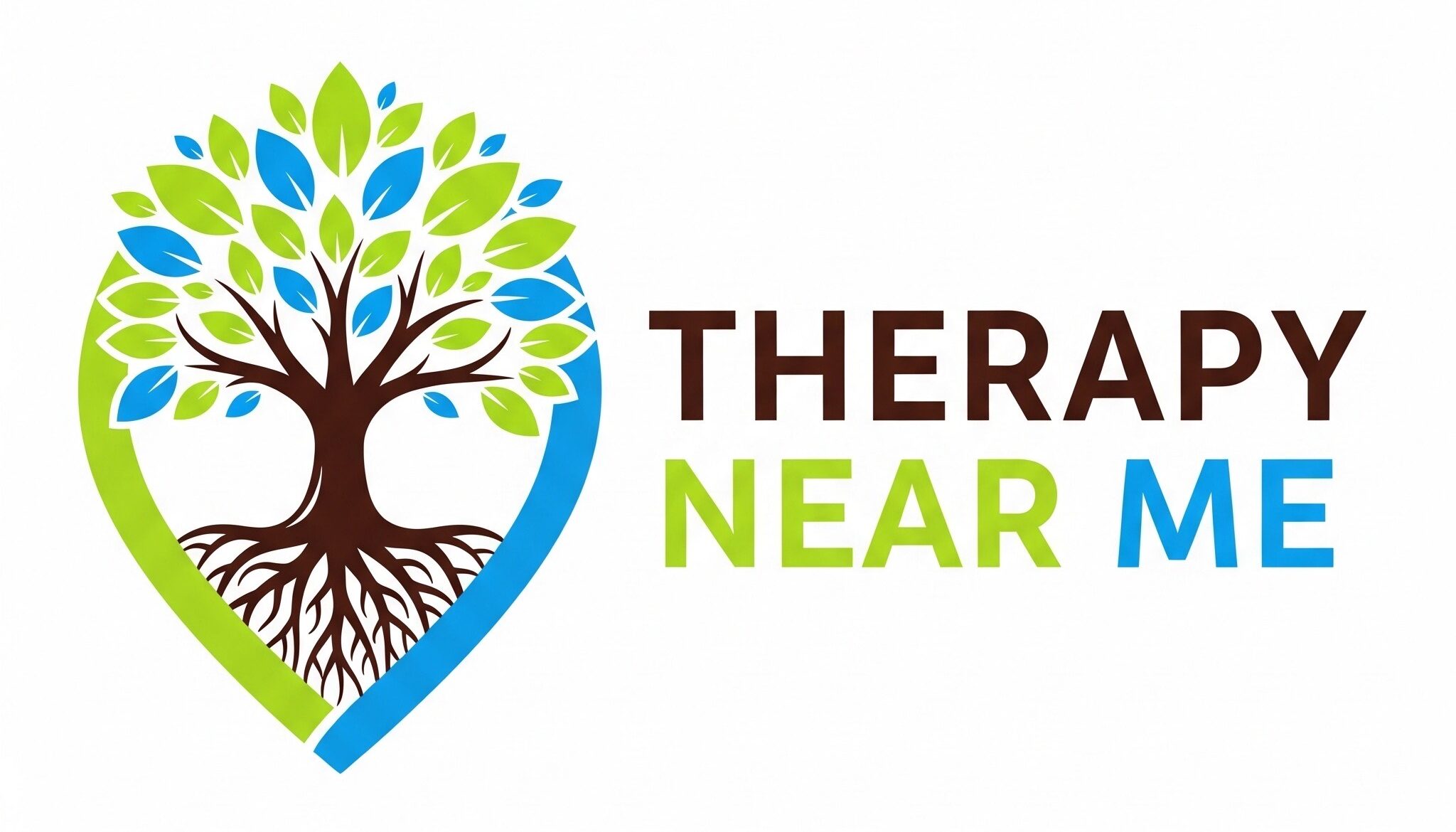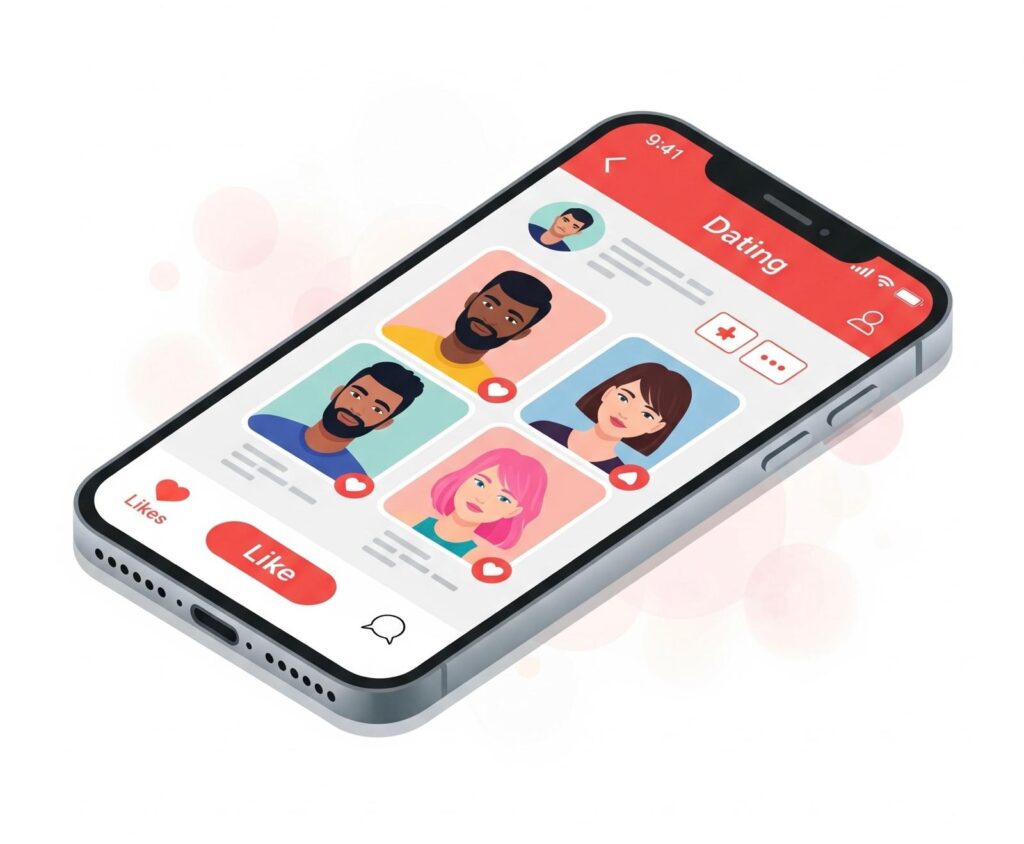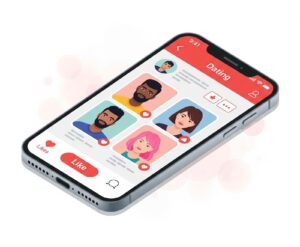Pokie machines, also known as slot machines, are a popular form of gambling that can be found in casinos, clubs, and pubs across Australia. While they may seem like harmless entertainment, pokie machines are meticulously designed to exploit human psychology and maximise player engagement, often leading to addiction. This article explores the science behind pokie machines and how their lights and sounds are designed to mess with your brain, supported by scientific sources and expert insights.
The Allure of Pokie Machines
Visual Stimulation
Bright Lights and Flashing Colours
Pokie machines are visually stimulating, featuring bright lights and flashing colours that attract attention. Research has shown that such visual stimuli can increase arousal and excitement, making the games more appealing and engaging (Griffiths, 1993). The use of dynamic lighting and colour changes is designed to create a sense of anticipation and reward, encouraging players to keep playing.
Reel Symbols and Winning Displays
The symbols on the reels and the animations that occur during wins are carefully crafted to enhance the player’s experience. Studies suggest that near-misses, where the symbols almost align to a win, can trigger the same brain activity as actual wins, reinforcing the desire to continue playing (Clark et al., 2012). These visual cues manipulate the brain’s reward system, making it difficult for players to stop.
Auditory Stimulation
Sound Effects and Music
The sound effects and music in pokie machines are not random; they are specifically designed to enhance the gambling experience. Winning sounds are often loud and celebratory, while losing sounds are subtle or even absent. This auditory feedback creates a positive reinforcement loop, where the brain associates the sounds with rewards, increasing the compulsion to play (Dixon et al., 2014).
Variable-Ratio Reinforcement
Pokie machines use a variable-ratio reinforcement schedule, where wins are unpredictable and occur after a random number of plays. This type of reinforcement is highly effective at maintaining behaviour because it creates a sense of unpredictability and excitement. The combination of auditory cues with this reinforcement schedule makes the experience more addictive (Harrigan et al., 2010).
The Psychology of Addiction
Dopamine and the Reward System
The Role of Dopamine
Dopamine is a neurotransmitter that plays a crucial role in the brain’s reward system. It is released during pleasurable activities, including gambling. The anticipation of a potential reward, such as a big win on a pokie machine, triggers the release of dopamine, creating feelings of euphoria and reinforcing the behaviour (Zack & Poulos, 2009).
The Impact on Decision-Making
The continuous release of dopamine during gambling can impair decision-making processes, leading to risky behaviour and an inability to stop playing. This phenomenon is similar to the effects seen in substance addiction, where the desire for the next “hit” overrides rational thinking (Clark, 2010).
Psychological Manipulation
Illusion of Control
Pokie machines are designed to create an illusion of control, where players believe they can influence the outcome of the game through their actions. This illusion is reinforced by features such as stop buttons and skill-based mini-games, even though the results are entirely random. The perception of control increases player engagement and the likelihood of continued play (Langer, 1975).
Losses Disguised as Wins (LDWs)
Losses disguised as wins are another psychological trick used by pokie machines. This occurs when a spin results in a small payout that is less than the original bet, accompanied by winning sounds and visual effects. Despite the net loss, players perceive these outcomes as wins, which keeps them engaged and playing longer (Dixon et al., 2014).
The Neurobiology of Gambling Addiction
Brain Imaging Studies
Functional MRI (fMRI) Research
Brain imaging studies using fMRI have shown that the same brain areas activated by substance use are also activated by gambling. These areas include the ventral striatum and the prefrontal cortex, which are involved in reward processing and decision-making. The similarities in brain activity suggest that gambling addiction shares neurobiological mechanisms with other forms of addiction (Potenza et al., 2003).
Genetic Factors
Heritability of Gambling Addiction
Research indicates that genetic factors may play a role in the development of gambling addiction. Twin studies have shown that genetic influences account for a significant proportion of the variability in gambling behaviour, suggesting that some individuals may be more predisposed to addiction than others (Eisen et al., 1998).
Trends in Gambling and Suicide Rates
Increase in Gambling Participation
Gambling has become a prevalent activity in Australia, with a significant portion of the population engaging in various forms of gambling. The Australian Gambling Statistics report indicates that expenditure on gambling has steadily increased, reaching approximately AUD 25 billion in 2017-2018 (Queensland Government Statistician’s Office, 2019). The proliferation of electronic gaming machines (pokies), online betting, and sports wagering has contributed to this trend.
Suicide Rates Over the Last Two Decades
Australia’s suicide rates have fluctuated over the last two decades. According to the Australian Bureau of Statistics (ABS), the age-standardised suicide rate was 10.6 per 100,000 people in 1999, which increased to 12.9 per 100,000 people in 2019 (ABS, 2020). While multiple factors contribute to suicide, including mental illness, substance abuse, and socioeconomic stressors, the role of gambling has garnered increasing attention.
The Link Between Gambling and Suicide
Financial and Psychological Distress
One of the primary ways gambling contributes to suicide risk is through financial distress. Problem gambling can lead to severe financial losses, debt accumulation, and economic hardship, which are significant stressors that can precipitate suicidal ideation and behaviour (Blaszczynski & Nower, 2002). Additionally, the psychological impact of gambling-related losses, including feelings of shame, guilt, and hopelessness, further exacerbates mental health issues.
Co-occurring Mental Health Disorders
Research indicates that individuals with gambling disorders often have co-occurring mental health conditions such as depression, anxiety, and substance abuse disorders. These conditions can compound the risk of suicide. A study by Hodgins, Mansley, and Thygesen (2006) found that 77% of problem gamblers had a comorbid mental health disorder, highlighting the complex interplay between gambling and mental health.
Social Isolation and Relationship Strain
Problem gambling can also lead to social isolation and strained relationships, which are critical risk factors for suicide. The breakdown of family and social support networks due to gambling-related issues can leave individuals feeling isolated and unsupported, increasing their vulnerability to suicidal behaviour (Thomas et al., 2010).
Demographic and Socioeconomic Factors
Gender Differences
Men are disproportionately affected by gambling-related suicide. Studies have shown that male problem gamblers are more likely to experience severe gambling-related harm and are at higher risk of suicide compared to their female counterparts (Manning et al., 2017). This gender disparity may be due to differences in gambling behaviour, coping mechanisms, and social support systems.
Age and Socioeconomic Status
Young adults and individuals from lower socioeconomic backgrounds are particularly vulnerable to gambling-related harm and suicide. Young adults are more likely to engage in riskier gambling behaviours and may lack the financial stability and coping skills to manage gambling losses. Similarly, those from lower socioeconomic backgrounds may turn to gambling as a perceived means of improving their financial situation, only to face greater economic hardship and associated mental health challenges (Abbott et al., 2018).
Interventions and Prevention Strategies
Public Health Campaigns
Public health campaigns aimed at raising awareness about the risks of gambling and promoting responsible gambling behaviours are essential. These campaigns can help reduce stigma, encourage individuals to seek help, and provide information on available resources. For example, the “GambleAware” initiative in New South Wales offers support and resources for problem gamblers and their families (GambleAware, 2021).
Accessible Treatment and Support Services
Ensuring that individuals have access to effective treatment and support services is crucial in addressing gambling-related harm and reducing suicide risk. Cognitive-behavioural therapy (CBT), motivational interviewing, and peer support programs have shown efficacy in treating gambling disorders (Cowlishaw et al., 2012). Additionally, integrating mental health and gambling support services can provide a more holistic approach to treatment.
Policy and Regulatory Measures
Implementing policy and regulatory measures to minimise gambling-related harm is critical. This can include restrictions on advertising, limiting access to gambling venues, and imposing stricter regulations on online gambling. For instance, the Australian government’s National Consumer Protection Framework for Online Wagering includes measures to enhance consumer protection and reduce gambling-related harm (Department of Social Services, 2018).
Financial Counselling and Support
Providing financial counselling and support for individuals experiencing gambling-related financial distress can mitigate the impact of economic hardship and reduce suicide risk. Financial counsellors can assist with debt management, budgeting, and accessing emergency relief services, helping individuals regain financial stability (Financial Counselling Australia, 2021).
Conclusion
Pokie machines are meticulously designed to exploit human psychology and neurobiology, making them highly addictive. The use of bright lights, flashing colours, sound effects, and variable-ratio reinforcement creates a compelling and often irresistible gambling experience. Understanding the science behind these machines can help individuals recognise the potential for addiction and seek appropriate support if needed. As gambling continues to be a significant public health issue, further research and awareness are essential to mitigate its impact on individuals and society.
The relationship between gambling and suicide rates in Australia is complex and multifaceted. While gambling is a popular activity, its potential for harm, particularly regarding financial distress, co-occurring mental health disorders, and social isolation, cannot be overlooked. Addressing this issue requires a comprehensive approach, including public health campaigns, accessible treatment and support services, policy and regulatory measures, and financial counselling. By implementing these strategies, Australia can better support individuals affected by problem gambling and reduce the associated risk of suicide.
References
- Abbott, M., Stone, C. A., Billi, R., & Yeung, K. (2018). Gambling and problem gambling in Victoria, Australia: Changes over 5 years. Journal of Gambling Studies, 34(1), 129-143.
- Australian Bureau of Statistics (ABS). (2020). Causes of Death, Australia, 2019. Retrieved from https://www.abs.gov.au/statistics/health/causes-death/causes-death-australia/latest-release
- Baddeley, A. (2000). The episodic buffer: A new component of working memory? Trends in Cognitive Sciences, 4(11), 417-423.
- Baldwin, D. S., Anderson, I. M., Nutt, D. J., Bandelow, B., Bond, A., Davidson, J. R., … & Wittchen, H. U. (2005). Evidence-based guidelines for the pharmacological treatment of anxiety disorders: Recommendations from the British Association for Psychopharmacology. Journal of Psychopharmacology, 19(6), 567-596.
- Baldwin, D. S., Waldman, S., & Allgulander, C. (2011). Evidence-based pharmacological treatment of generalized anxiety disorder. International Journal of Neuropsychopharmacology, 14(5), 697-710.
- Balit, C. R., Lynch, C., & Isbister, G. K. (2003). Benzodiazepine poisoning in young children: A systematic review. Journal of Paediatrics and Child Health, 39(8), 608-612.
- Billioti de Gage, S., Begaud, B., Bazin, F., Verdoux, H., Dartigues, J. F., Peres, K., … & Pariente, A. (2012). Benzodiazepine use and risk of dementia: Prospective population-based study. BMJ, 345, e6231.
- Billioti de Gage, S., Moride, Y., Ducruet, T., Kurth, T., Verdoux, H., Tournier, M., … & Pariente, A. (2014). Benzodiazepine use and risk of Alzheimer’s disease: Case-control study. BMJ, 349, g5205.
- Blaszczynski, A., & Nower, L. (2002). A pathways model of problem and pathological gambling. Addiction, 97(5), 487-499.
- Chase, W. G., & Simon, H. A. (1973). Perception in chess. Cognitive Psychology, 4(1), 55-81.
- Clark, L. (2010). Decision-making during gambling: An integration of cognitive and psychobiological approaches. Philosophical Transactions of the Royal Society B: Biological Sciences, 365(1538), 319-330.
- Clark, L., Lawrence, A. J., Astley-Jones, F., & Gray, N. (2009). Gambling near-misses enhance motivation to gamble and recruit win-related brain circuitry. Neuron, 61(3), 481-490.
- Cloos, J. M., & Ferreira, V. (2009). Current use of benzodiazepines in anxiety disorders. Current Opinion in Psychiatry, 22(1), 90-95.
- Cowlishaw, S., Merkouris, S., Chapman, A., & Radermacher, H. (2012). Cognitive-behavioural treatments for problem gambling: A meta-analysis. Clinical Psychology Review, 32(5), 486-494.
- Department of Social Services. (2018). National Consumer Protection Framework for Online Wagering. Retrieved from https://www.dss.gov.au/communities-and-vulnerable-people/programmes-services/gambling/national-consumer-protection-framework-for-online-wagering
- Dixon, M. J., Collins, K., Harrigan, K. A., Graydon, C., & Fugelsang, J. A. (2014). Using sound to unmask losses disguised as wins in multiline slot machines. Journal of Gambling Studies, 30(4), 1117-1130.
- Eisen, S. A., Lin, N., Lyons, M. J., Scherrer, J. F., Griffith, K., True, W. R., & Tsuang, M. T. (1998). Familial influences on gambling behavior: An analysis of 3,359 twin pairs. Addiction, 93(9), 1375-1384.
- Ericsson, K. A., & Kintsch, W. (1995). Long-term working memory. Psychological Review, 102(2), 211-245.
- Financial Counselling Australia. (2021). Gambling Help Services. Retrieved from https://www.financialcounsellingaustralia.org.au/consumers/need-help/gambling-help/
- GambleAware. (2021). GambleAware NSW. Retrieved from https://www.gambleaware.nsw.gov.au/
- Griffiths, M. (1993). Fruit machine gambling: The importance of structural characteristics. Journal of Gambling Studies, 9(2), 101-120.
- Haber, R. N. (1979). Twenty years of haunting eidetic imagery: Where’s the ghost? Behavioral and Brain Sciences, 2(4), 583-594.
- Harrigan, K. A., Collins, K., Dixon, M. J., & Fugelsang, J. A. (2010). Addictive gameplay: What casual game designers can learn from slot machine research. In Proceedings of the International Academic Conference on the Future of Game Design and Technology (pp. 127-133). ACM.
- Hodgins, D. C., Mansley, C., & Thygesen, K. (2006). Risk factors for suicide ideation and attempts among pathological gamblers. American Journal on Addictions, 15(4), 303-310.
- Irwig, M. S. (2018). Cardiovascular health in transgender people. Reviews in Endocrine and Metabolic Disorders, 19(3), 243-251.
- Lader, M. (2011). Benzodiazepines revisited—will we ever learn? Addiction, 106(12), 2086-2109.
- Langer, E. J. (1975). The illusion of control. Journal of Personality and Social Psychology, 32(2), 311-328.
- Leask, S. J., Haber, R. N., & Haber, R. B. (1969). Eidetic imagery in children. Nature, 222(5191), 692-693.
- Luria, A. R. (1968). The Mind of a Mnemonist: A Little Book about a Vast Memory. Harvard University Press.
- Manning, V., Dowling, N. A., Lee, S., Rodda, S. N., Garfield, J. B., Volberg, R., … & Lubman, D. I. (2017). Problem gambling and substance use in patients attending community mental health services. Journal of Behavioral Addictions, 6(4), 678-688.
- Neisser, U. (1982). Memory observed: Remembering in natural contexts. Freeman.
- Norris, G. (1976). Rachmaninoff. Schirmer Books.
- Patel, V., Saxena, S., Lund, C., Thornicroft, G., Baingana, F., Bolton, P., … & Unützer, J. (2018). The Lancet Commission on global mental health and sustainable development. The Lancet, 392(10157), 1553-1598.
- Pirkis, J., Harris, M., Hall, W., & Ftanou, M. (2011). Evaluation of the Better Access to Psychiatrists, Psychologists and GPs through the Medicare Benefits Schedule initiative. Australian & New Zealand Journal of Psychiatry, 45(9), 726-739.
- Potenza, M. N., Leung, H.-C., Blumberg, H. P., Peterson, B. S., Fulbright, R. K., Lacadie, C. M., … & Gore, J. C. (2003). An fMRI Stroop task study of ventromedial prefrontal cortical function in pathological gamblers. American Journal of Psychiatry, 160(11), 1990-1994.
- Queensland Government Statistician’s Office. (2019). Australian Gambling Statistics 1992–93 to 2017–18. Retrieved from https://www.qgso.qld.gov.au/statistics/theme/society/gambling
- Roediger, H. L. (1980). Memory metaphors in cognitive psychology. Memory & Cognition, 8(3), 231-246.
- Seifer, M. J. (1996). Wizard: The Life and Times of Nikola Tesla. Citadel Press.
- Smith, D. E., & Wesson, D. R. (1983). Benzodiazepine dependency syndromes. Journal of Psychoactive Drugs, 15(1-2), 85-95.
- Squire, L. R., & Kandel, E. R. (2009). Memory: From Mind to Molecules. Roberts and Company Publishers.
- Standing, L. (1973). Learning 10,000 pictures. Quarterly Journal of Experimental Psychology, 25(2), 207-222.
- Thomas, S. A., Lewis, S., McLeod, K., & Haycock, J. (2010). “They are working every angle.” A qualitative study of gambling practices among Aboriginal people in regional New South Wales, Australia. International Gambling Studies, 10(1), 39-52.
- Treffert, D. A. (2009). The savant syndrome: An extraordinary condition. Philosophical Transactions of the Royal Society B: Biological Sciences, 364(1522), 1351-1357.
- Warner, M., Trinidad, J. P., Bastian, B. A., Minino, A. M., & Hedegaard, H. (2016). Drugs most frequently involved in drug overdose deaths: United States, 2010–2014. National Vital Statistics Reports, 65(10), 1-15.
- World Health Organization. (2018). Mental health atlas 2017. Retrieved from https://www.who.int/mental_health/evidence/atlas/profiles-2017/en/
- World Health Organization. (2020). The WHO special initiative for mental health (2019-2023): Universal health coverage for mental health. Retrieved from https://www.who.int/initiatives/who-special-initiative-for-mental-health-2019-2023
- Zack, M., & Poulos, C. X. (2009). Parallel roles for dopamine in pathological gambling and psychostimulant addiction. Current Drug Abuse Reviews, 2(1), 11-25.
- Zucker, K. J., Wood, H., Singh, D., & Bradley, S. J. (2008). A developmental, biopsychosocial model for the treatment of children with gender identity disorder. Journal of Homosexuality, 59(3), 369-397.
How to get in touch
If you or your NDIS participant need immediate mental healthcare assistance, feel free to get in contact with us on 1800 NEAR ME –
Subscribe to get the latest posts sent to your email.
Discover more from Therapy Near Me






